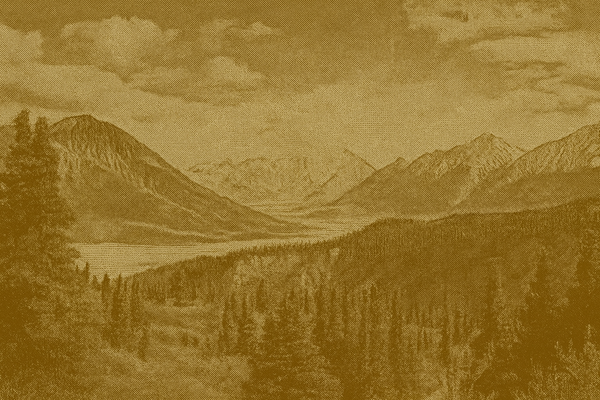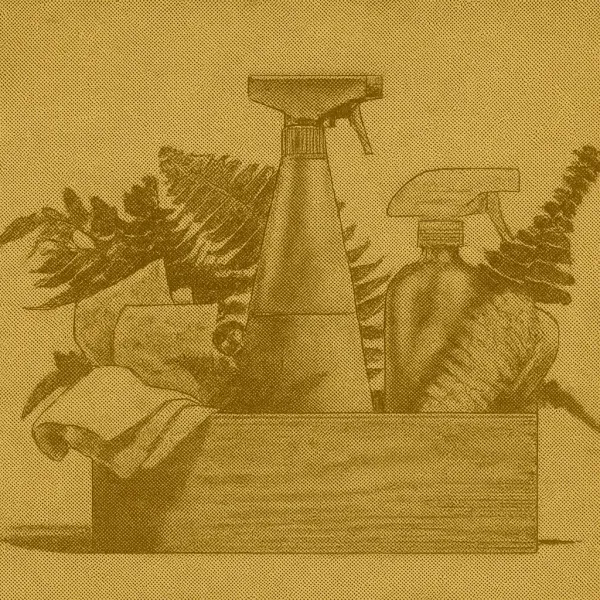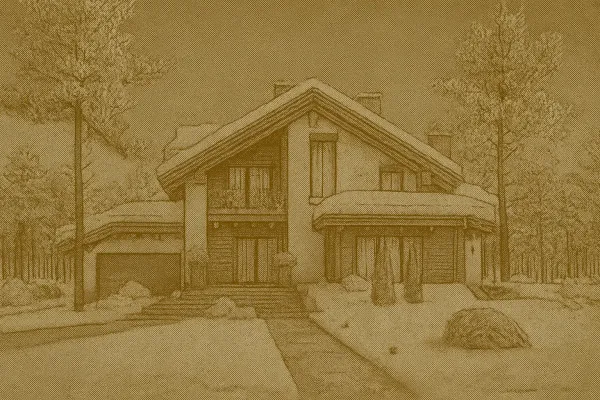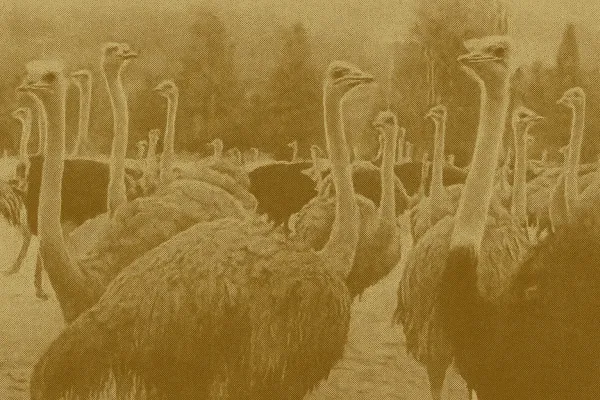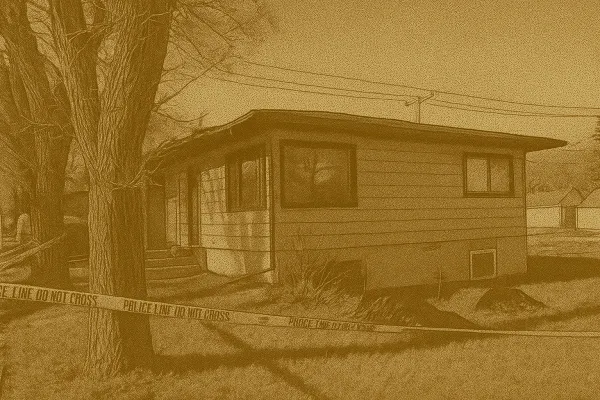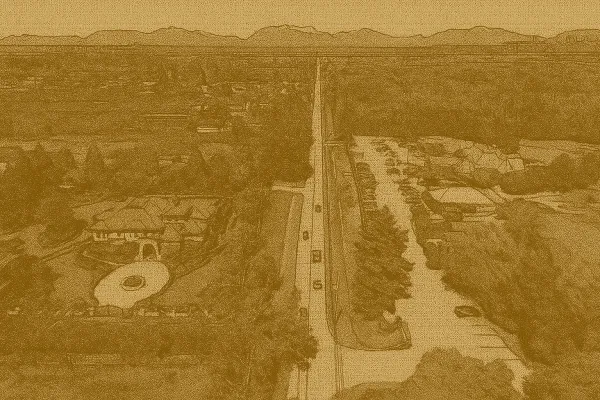Heads up: some of the links in this post are affiliate links. That means if you click and purchase, we may get a commission. It’s how we keep this site running without cluttering it with ads.
The Yukon Territory offers some of Canada’s most breathtaking natural attractions — vast wilderness landscapes, pristine lakes, and dramatic mountain views that remain largely untouched by crowds. These remote destinations showcase the best of Yukon tourist attractions, where you can connect with nature away from busy travel routes and experience authentic northern adventure.
From peaceful lakeshores and scenic hiking trails to historic mining sites tucked in alpine valleys, the Yukon is filled with places to visit that highlight its rich ecology and heritage. Wildlife viewing opportunities abound, with chances to spot caribou, moose, and Dall sheep in their natural habitats. Whether you’re camping beside a glassy lake or exploring rugged trails in Kluane National Park, the territory’s hidden gems reveal the true spirit of Canada’s North.
9) Kathleen Lake Campground
Kathleen Lake Campground is one of the top Yukon attractions for outdoor enthusiasts, located within the breathtaking Kluane National Park and Reserve. The site offers panoramic mountain views and crystal-clear waters that mirror the surrounding peaks — a perfect setting for anyone seeking peaceful camping in Yukon’s wilderness.
You can set up your tent or park your RV right along the shoreline, waking up to still waters and crisp alpine air. Well-marked hiking trails lead into the mountains, while nearby fishing spots offer a quiet escape for anglers. Wildlife sightings are common, from soaring eagles to grazing Dall sheep on distant ridges.
Facilities here are simple but well maintained, ensuring a comfortable stay without the crowds often found in more popular destinations. The remote location makes Kathleen Lake one of the best places to visit in Yukon for authentic wilderness camping and photography in a truly unspoiled landscape.
Rating: 4.6 (56 reviews)
Location: Kathleen Lake Rd, Haines Rd, YT Y0B 1H0, Canada
Website: Visit Website
8) Tombstone Territorial Park
Tombstone Territorial Park, located along the iconic Dempster Highway north of Dawson City, is one of the most spectacular Yukon attractions for nature lovers and photographers alike. This rugged wilderness area is famous for its dramatic peaks, vast tundra valleys, and untouched alpine landscapes that reveal the wild beauty of northern Canada.
The park offers some of the best hiking trails in Yukon, winding through rocky ridges, alpine meadows, and glacier-carved valleys. Along the way, you might spot wildlife such as caribou, Dall sheep, and even grizzly bears roaming freely in their natural habitat. The jagged Tombstone Mountains provide striking views that shift with the light and seasons, making every visit unique.
Stop by the Tombstone Interpretive Centre to learn about the park’s geology, wildlife, and cultural history before setting out on your adventure. In winter, the park transforms into a snowy wonderland, offering opportunities for cross-country skiing, snowshoeing, and viewing the northern lights — a true all-season wilderness experience and one of the top things to do in Yukon.
Rating: 4.9 (78 reviews)
Location: Dempster Highway, Dawson, YT Y0A 0A2, Canada
Contact: +1 867-993-7714
Website: Visit Website
Support The Canada Report and help keep it ad-free and independent — click here before you shop online . We may receive a small commission if you make a purchase. Your support means a lot — thank you.
7) Miles Canyon
Miles Canyon, just minutes from downtown Whitehorse, is one of the most remarkable Yukon tourist attractions — a dramatic natural landmark shaped by volcanic activity over 8.5 million years ago. Its towering basalt cliffs rise above the rushing turquoise waters of the Yukon River, creating one of the territory’s most photogenic landscapes.
Visitors can explore well-marked hiking trails that trace the canyon rim, offering panoramic views of the vibrant water and ancient rock formations. The contrast between the dark volcanic walls and the bright river below makes this one of the best places to visit in Yukon for photography, sightseeing, and light hiking.
Wildlife sightings are common, with eagles soaring overhead and the occasional fox or beaver along the riverbanks. The trails suit most fitness levels, making Miles Canyon a popular yet peaceful stop for families, hikers, and anyone seeking a taste of Yukon’s natural beauty close to the city. Whether you’re walking the suspension bridge or simply admiring the view, Miles Canyon combines geological history, accessibility, and outdoor adventure — truly one of the top things to do in Yukon.
Rating: 4.8 (749 reviews)
Location: Whitehorse, YT Y1A 5V8, Canada
Contact: +1 647-890-9090
6) Talus Lake
Talus Lake is one of Yukon’s most pristine hiking destinations, offering a true wilderness escape far from the well-traveled routes. Tucked deep within the Yukon backcountry, this secluded alpine lake is surrounded by rugged peaks and rocky slopes — the “talus” that gives it its name.
The hike to Talus Lake is moderately challenging, taking you across some of the most scenic Yukon hiking trails. Along the way, you’ll pass through rolling tundra, alpine meadows, and crystal-clear streams before reaching the tranquil shoreline. The reward is a breathtaking view of turquoise waters framed by dramatic mountain ridges.
This remote gem attracts hikers, photographers, and adventurers seeking solitude and unspoiled natural beauty. Whether you’re casting a line in the calm waters, capturing panoramic photos, or simply soaking in the silence, Talus Lake stands out as one of the most peaceful and rewarding Yukon attractions for those willing to venture off the beaten path.
Rating: 5.0 (3 reviews)
Location: Yukon Y0B 0A3, Canada
5) Paddlewheel Graveyard
The Paddlewheel Graveyard, located along the banks of the Yukon River near Dawson City, is one of the most fascinating historic Yukon attractions. Here, the skeletal remains of old wooden paddlewheelers — once vital to transportation during the Klondike Gold Rush — rest quietly, slowly being reclaimed by nature.
In the late 1800s and early 1900s, these steamboats carried miners, supplies, and dreams of fortune along the Yukon River. When their working days ended, many were abandoned here, creating an outdoor museum that tells the story of Yukon’s early pioneers and its rugged frontier spirit.
Walking among the weathered hulls and rusted fittings, visitors can feel the passage of time and the harsh realities of life during the gold rush era. The mix of decaying wood and wild vegetation makes for hauntingly beautiful photography — and a powerful reminder of how history and wilderness coexist in the North.
Today, the Paddlewheel Graveyard stands as one of Dawson City’s most unique historical sites and one of the top things to do in Yukon for anyone interested in exploring the territory’s gold rush heritage.
Rating: 4.6 (91 reviews)
Location: Dawson City, YT Y0B 0A3, Canada
Contact: +1 867-993-5566
4) Chadburn Lake Recreation Area
Chadburn Lake Recreation Area sits just minutes from downtown Whitehorse, making it one of the most convenient and family-friendly Yukon attractions. This peaceful park is known for its calm, glassy waters — perfect for kayaking, canoeing, paddleboarding, or simply relaxing along the shoreline while surrounded by forest and mountain views.
A network of scenic walking trails winds around the lake, offering plenty of opportunities to spot local wildlife such as ducks, loons, and other waterfowl. It’s a favourite destination for locals and visitors alike looking to enjoy outdoor activities in Yukon without venturing far from the city.
Chadburn Lake is ideal for picnics, swimming, or short day trips from Whitehorse. Families often visit throughout the summer months to enjoy the sunshine, while beginners can safely try water sports in a calm, protected setting. Whether you’re seeking a quick escape into nature or a relaxing afternoon by the water, Chadburn Lake Recreation Area delivers an easy-to-reach taste of Yukon’s wilderness charm.
Rating: 4.4 (8 reviews)
Location: MXWC+4W, Whitehorse, YT Y1A 1H6, Canada
3) Swan Haven Interpretive Centre
Swan Haven Interpretive Centre, located on the peaceful shores of Marsh Lake, is one of Yukon’s best destinations for wildlife viewing and nature photography. Each spring, from March to May, thousands of trumpeter and tundra swans stop here during their annual migration, creating one of the most spectacular natural events in the territory.
The centre features elevated viewing platforms and telescopes that let visitors watch the swans up close without disturbing their habitat. Knowledgeable staff and volunteers share fascinating insights about swan behaviour, migration routes, and the importance of Yukon’s wetlands for bird conservation.
Inside, you’ll find educational exhibits about local ecosystems and interactive displays for all ages. Seasonal programs and guided tours provide even more context about the region’s biodiversity and the delicate balance of its wetlands.
With its calm lakeside setting and abundance of birdlife, Swan Haven Interpretive Centre is a hidden gem among Yukon attractions — a must-see for anyone interested in nature, wildlife, or peaceful outdoor experiences in Canada’s North.
Rating: 4.5 (95 reviews)
Location: Marsh Lake, YT Y0B 1Y2, Canada
Contact: +1 867-667-8291
Website: Visit Website
Support The Canada Report and help keep it ad-free and independent — click here before you shop online . We may receive a small commission if you make a purchase. Your support means a lot — thank you.
2) Ivvavik National Park
Ivvavik National Park is one of Canada’s most remote and pristine wilderness destinations, located in the far northwest corner of the Yukon along the Arctic coast. The name “Ivvavik,” meaning “nursery” in Inuvialuktun, reflects the park’s role as a vital calving ground for the Porcupine caribou herd — one of North America’s last great wildlife migrations.
This remarkable park showcases the untouched beauty of Yukon’s Arctic wilderness. Expansive tundra, rolling mountains, and winding rivers stretch as far as the eye can see, offering visitors a rare glimpse of landscapes that remain completely undeveloped. The Firth River, one of Canada’s most renowned wild rivers, draws adventurers from around the world for whitewater rafting, canyon exploration, and backcountry camping.
Wildlife is abundant — grizzly bears, wolves, Dall sheep, and countless migratory birds all call this region home. Access is limited to small charter flights from Inuvik, which only enhances Ivvavik’s sense of isolation and adventure.
Guided tours and cultural expeditions provide opportunities to learn from Inuvialuit guides about the region’s deep Indigenous heritage and ecological importance. For those seeking true solitude and connection to nature, Ivvavik National Park stands among the top Yukon national parks and one of the most extraordinary things to do in Yukon for experienced explorers.
Rating: 4.9 (214 reviews)
Location: Northern Yukon, accessible from Inuvik, NT
Contact: Parks Canada – +1 867-777-8800
1) Yukon Wildlife Preserve
The Yukon Wildlife Preserve, located just 25 minutes from downtown Whitehorse on Takhini Hot Springs Road, spans over 350 acres of protected northern wilderness. This popular wildlife preserve in Whitehorse is home to 12 iconic Yukon species — including elk, moose, bison, muskoxen, and mountain goats — all living in large, natural habitats that closely resemble their environments in the wild.
Visitors can explore the 5-kilometer loop trail on foot or join a guided Yukon Wildlife Preserve tour to learn about the animals’ behaviours, habitats, and conservation efforts. Each visit offers a rare opportunity to see northern wildlife up close while supporting one of the territory’s most important conservation programs.
Operating year-round, the Yukon animal preserve functions as both a registered charity and Yukon’s only wildlife rehabilitation facility. It’s also an accredited member of Canada’s Accredited Zoos and Aquariums, ensuring the highest standards of animal care and education.
Families, photographers, and nature lovers alike will enjoy spending a few hours here observing more than 150 animals roaming freely across meadows, wetlands, and forested hills. Whether you visit in summer or winter, the Yukon Wildlife Preserve remains one of the top Whitehorse attractions — a must-see experience that captures the spirit of Yukon’s wild north.
Rating: 4.7 (1067 reviews)
Location: Takhini Hot Springs Rd, Yukon Y1A 7A2, Canada
Contact: +1 867-456-7300
Website: Visit Website
Exploring Yukon's Unique Ecosystems
Yukon's vast wilderness spans multiple climate zones from boreal forests to arctic tundra, creating distinct habitats for specialized plants and animals. You'll find species here that exist nowhere else in Canada, adapted to extreme seasonal changes and pristine environments.
Overview of Biodiversity
The Yukon contains five major ecoclimatic regions that support different plant and animal communities. The boreal forest covers most of the southern territory with white spruce, aspen, and birch trees.
Moving north, you'll encounter the taiga shield with its mix of coniferous forests and wetlands. The cordilleran region features alpine meadows and mountain slopes above the treeline.
The northern arctic encompasses tundra landscapes with permafrost and specialized cold-adapted vegetation. Finally, the southern arctic creates a transition zone between boreal and true arctic conditions.
Key Ecosystem Features:
- Permafrost zones affecting plant root systems
- Seasonal temperature swings from -40°F to 80°F
- 24-hour daylight in summer promoting rapid plant growth
- Wetland complexes supporting migratory birds
Each region hosts unique species assemblages. You'll notice dramatic changes in plant height, density, and species composition as you travel from south to north across these natural wonders in Yukon.
Rare Flora and Fauna
Several plant and animal species in Yukon exist at the edge of their global ranges or represent unique northern adaptations. The Yukon wild rose grows only in specific river valleys and represents the northernmost population of this species.
You might spot the collared pika, a small mammal that survives winter by creating hay piles during summer. Dall sheep inhabit high mountain areas and display distinctive curved horns.
Notable Rare Species:
- Arctic lupine - purple wildflower in tundra areas
- Woodland caribou - threatened forest subspecies
- Peregrine falcon - recovered from near extinction
- Northern hawk owl - year-round arctic resident
The territory's pristine wilderness areas protect critical habitat for these species. Lynx populations fluctuate dramatically with snowshoe hare cycles every 8-11 years.
Golden eagles nest on remote cliff faces while gyrfalcons hunt ptarmigan across open tundra. You'll find these raptors in areas with minimal human disturbance, making Yukon crucial for their conservation.
How to Responsibly Visit Nature Hidden Gems in Yukon
Protecting Yukon's pristine wilderness requires following specific guidelines that minimize your environmental impact while ensuring safe access to remote locations. Understanding proper etiquette toward Indigenous communities and seasonal travel conditions will help preserve these hidden natural wonders for future visitors.
Leave No Trace Principles
Pack out all waste including food scraps, toilet paper, and microtrash like fruit peels. Even biodegradable items decompose slowly in Yukon's cold climate and can harm wildlife.
Camp only in designated areas or on durable surfaces like rock, gravel, or snow. Avoid fragile vegetation and wetland areas that take decades to recover from damage.
Store food properly in bear-resistant containers or hang it at least 4 meters high and 3 meters from tree trunks. Black bears and grizzly bears are common throughout Yukon's wilderness areas.
Keep campsites small and avoid altering the landscape. Never build new fire rings or move rocks and logs.
Stay on established trails when exploring Kluane's stunning trails and other hiking areas. Creating shortcuts causes erosion and habitat fragmentation.
Wash dishes and yourself at least 60 meters away from water sources using biodegradable soap. Scatter greywater over a wide area after straining food particles.
Respecting Local Communities
Many of Yukon's hidden gems sit on traditional territories of First Nations communities. Research the specific Indigenous group whose land you plan to visit before your trip.
Ask permission when accessing areas through private property or traditional hunting grounds. Some locations may be culturally sensitive or temporarily restricted.
Support Indigenous-owned businesses and guided tours when possible. Local guides provide valuable cultural context while ensuring you visit areas appropriately.
Learn basic information about the region's Indigenous history and current communities. This knowledge helps you appreciate the cultural significance of natural landmarks.
Follow posted signs and closures that protect culturally important sites. Some areas may be restricted during traditional ceremonies or seasonal activities.
Purchase supplies and services in local communities like Whitehorse, Dawson City, or smaller settlements. Your spending directly supports residents who maintain access to remote areas.
Seasonal Access and Safety Tips
Winter access (November through March) requires specialized gear including snowshoes, avalanche safety equipment, and cold-weather camping gear rated to -40°C.
Many remote areas become inaccessible during spring breakup (April to May) when ice becomes unsafe and roads turn impassable. Plan visits for summer or winter seasons instead.
Summer conditions (June through August) bring 20+ hours of daylight but also peak mosquito and blackfly activity. Bring headnets and DEET-based repellent.
Check current road conditions through 511 Yukon before traveling to remote trailheads. Many access roads are gravel and become muddy or washed out during heavy rains.
Carry emergency communication devices like satellite messengers or personal locator beacons. Cell phone coverage is limited outside major communities.
File detailed trip plans with trusted contacts including your planned route, expected return date, and emergency contacts. Inform them immediately when you return safely.
Water sources may contain Giardia and other pathogens. Always treat water by boiling, filtering, or using purification tablets before drinking.
Support The Canada Report and help keep it ad-free and independent — click here before you shop online . We may receive a small commission if you make a purchase. Your support means a lot — thank you.
Frequently Asked Questions
Many visitors wonder about accessing remote waterfalls, winter activities at places like Tombstone Territorial Park, and wildlife viewing opportunities around hidden spots like Talus Lake and the Paddlewheel Graveyard.
What are some of the least known but must-see natural attractions in the Yukon?
Talus Lake offers crystal-clear waters surrounded by towering peaks. Few tourists make the trek to this alpine gem.
The Paddlewheel Graveyard along the Yukon River contains hidden natural wonders where old steamboat remains create unique habitats. Wildlife now calls these rusty structures home.
Miles Canyon features dramatic basalt cliffs and churning rapids. The canyon walls tell stories of ancient volcanic activity.
Which secluded natural spots are considered local secrets in the Yukon?
Kathleen Lake Campground sits away from main tourist routes in Kluane National Park. Local residents often camp here to escape crowds.
Remote sections of Tombstone Territorial Park hide pristine valleys. These areas require longer hikes but reward visitors with untouched wilderness.
Hidden creek systems near popular trails offer quiet spots for reflection. Local guides know these locations but rarely share them with large groups.
How can I access off-the-beaten-path natural sites in the Yukon without impacting the environment?
Stick to established trails when they exist. Creating new paths damages fragile tundra vegetation that takes decades to recover.
Pack out everything you bring in, including food scraps. Even organic waste disrupts natural ecosystems in the harsh northern climate.
Camp only in designated areas or on durable surfaces like rock or gravel. Avoid camping near water sources to protect wildlife access routes.
Travel in small groups of four people or less. Large groups create more noise and impact on sensitive environments.
Can you recommend any hidden natural wonders that are accessible during the winter months in the Yukon?
Frozen Kathleen Lake becomes a massive ice skating rink surrounded by snow-capped peaks. The lake typically freezes solid by December.
Tombstone Territorial Park transforms into a winter wonderland under the Northern Lights. Snowshoeing trails remain accessible throughout winter.
Miles Canyon looks completely different under ice and snow. The frozen rapids create unique ice formations that change daily.
Winter offers better visibility through bare trees to spot hidden waterfalls. Many become frozen cascades that sparkle in the low arctic sun.
Are there any unique wildlife viewing opportunities in less frequented areas of the Yukon?
Dall sheep often graze near Talus Lake during summer months. The remote location means they show less fear of humans.
Caribou migration routes cross through hidden valleys in Tombstone Territorial Park. Local wildlife officers can provide current migration timing.
River otters play around the Paddlewheel Graveyard structures. Early morning and evening offer the best viewing chances.
Lynx tracks appear frequently around Kathleen Lake Campground. While rarely seen, their large paw prints in snow or mud indicate their presence.
What safety precautions should be taken when visiting remote natural attractions in the Yukon?
Carry a satellite communicator or emergency beacon. Cell phone service does not exist in most remote natural areas.
Inform someone of your exact travel plans and expected return time. Local RCMP can assist with search efforts if needed.
Pack extra food, water, and warm clothing even for day trips. Weather changes rapidly and can strand visitors overnight.
Travel with a partner when possible. Solo travel increases risks in remote wilderness areas far from help.
Carry bear spray and know how to use it properly. Both black bears and grizzly bears live throughout the Yukon wilderness.


